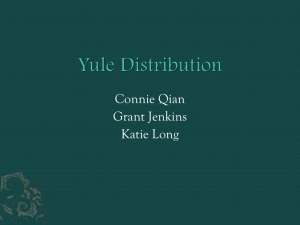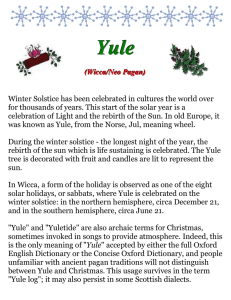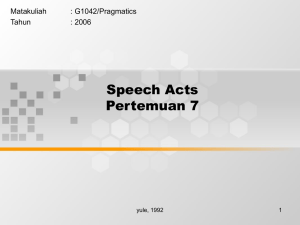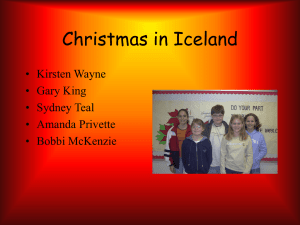Politeness and interaction Pertemuan 9 Matakuliah : G1042/Pragmatics
advertisement
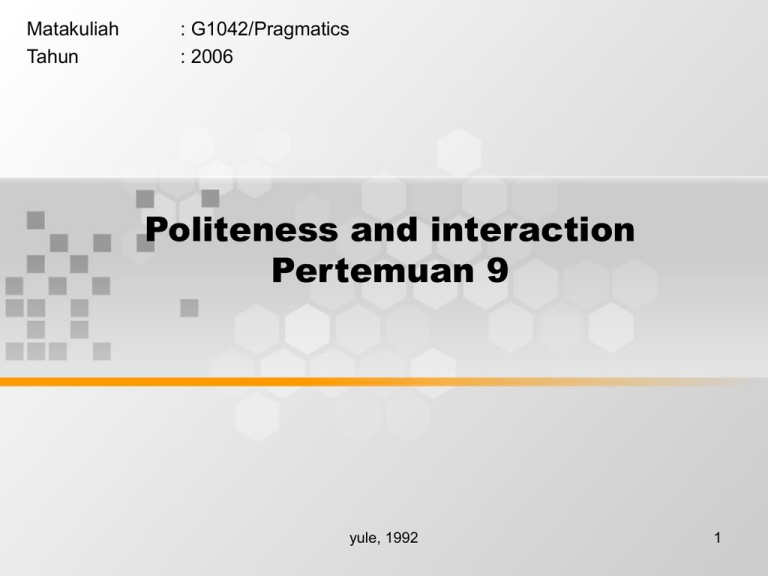
Matakuliah Tahun : G1042/Pragmatics : 2006 Politeness and interaction Pertemuan 9 yule, 1992 1 Learning Outcomes • Mahasiswa dapat mendemonstrasikan face wants, negative dan positif face want dalam percakapan sehari hari (C3 yule, 1992 2 Materi outline • Politeness • Management of 'Face"Face wants • Negative and Positive face yule, 1992 3 9.1 Politeness (1) • Definition: • In language study: – A. how languages express the social distance between the speakers and their different role relationship; – B. how face-work, that is, the attempt to establish, maintain, and save face during conversations, is carried out in a speech community. (Richards, 1997) yule, 1992 4 9.1 Politeness (2) • Definition: • ‘polite social behaviour’, or etiquette, within a culture. • Some general principles for being polite within a particular culture; – Being tactful, generous, modest, and sympathetic toward others yule, 1992 5 9.2 Face wants • Definition: • In communication between two or more persons, the positive image of one self that one shows or intends to show to the other participant. (Richards,1997) • People’s expectations concerning their public self image. • Self threatening act – If a speaker says something that represents a threat to another individual’s expectations regarding self image. • A face saving act – The speaker say something to lessen the possible threat. yule, 1992 6 9.3 Negative and positive face • A person’s negative face is – the need to be independent, to have freedom of action, and not to be imposed on by others. • A person’s positive face is – The need to be accepted, even liked, by others, to be treated as a member of the same group, and to know that his, or her wants are shared by others. • Negative face is the need to be independent and positive face is the need to be connected. yule, 1992 7 Conclusion • In language study, politeness involves two things; i.e. the language expressions used and the ‘face’ yule, 1992 8 yule, 1992 9 8.1 Speech act classification (2) • A. declaratives – A speech act which changes the state of affairs in the world. – E.g. during the wedding ceremony the act of marriage is performed when the phrase I now pronounce you man and wife is uttered. • B. representatives – A speech act which describes states or events in the world, such as an assertion, a claim, a report. – E.g. the assertion: This is a German car. • (Richards, 1997) yule, 1992 10 8.1 Speech act classification (3) • C. expressives – A speech act in which the speaker expresses feelings and attitudes about something, such as an apology, a complaint, to thank someone, to congratulate someone. – E.g. The meal was delicious • D. directives – A speech act that has the function of getting the listener to do something, such as suggestion, a request, or a command. – E.g. Please sit down. • E. commissives – A speech act that commits the speaker to doing something in the future, such as a promise or a threat. – E.g. If you don’t stop fighting, I’ll call the police • (Richards, 1997) yule, 1992 11 8.1 Speech act classification (4) • C. expressives – A speech act in which the speaker expresses feelings and attitudes about something, such as an apology, a complaint, to thank someone, to congratulate someone. – E.g. The meal was delicious • D. directives – A speech act that has the function of getting the listener to do something, such as suggestion, a request, or a command. – E.g. Please sit down. • E. commissives – A speech act that commits the speaker to doing something in the future, such as a promise or a threat. – E.g. If you don’t stop fighting, I’ll call the police • (Richards, 1997) yule, 1992 12 8.2 Direct and Indirect Speech act • Direct speech act – There is a direct relationship between a structure and a function – E.g. a declarative use in order to make declarative sentence. • It’s cold outside. • I hereby tell you about the weather • Indirect speech act – There is an indirect relationship between a structure and a function. – E.g. we use a declarative sentence in order to make a request. • It’s cold outside • I hereby request of you that you close the door. yule, 1992 13 8.3 Direct and Indirect Speech act • Direct speech act – There is a direct relationship between a structure and a function – E.g. a declarative use in order to make declarative sentence. • It’s cold outside. • I hereby tell you about the weather • Indirect speech act – There is an indirect relationship between a structure and a function. – E.g. we use a declarative sentence in order to make a request. • It’s cold outside • I hereby request of you that you close the door. yule, 1992 14
